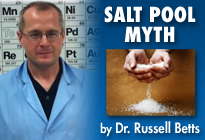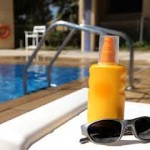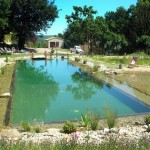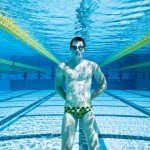Salt Water Pools Banned.



Salt Water Pools Banned – It’s no secret that swimming pool salt water cells are dangerous to humans and pets but they are also dangerous to the environment. Some municipalities are taking a proactive approach to saving the the environment by banning salt water chlorinators for swimming pools. An ordinance was enacted in the Santa Clarita Valley making it illegal for swimming pools connected to the sewer system to be converted to saltwater pools. The ordinance also made it illegal for both new and existing saltwater pools to be connected to the sewer system.
Saltwater Pool Ordinance
- New and existing saltwater pool connections to the sewer system are prohibited. It is also illegal to convert swimming pools connected to the sewer system to saltwater pools.
- A violation of the ordinance banning saltwater pools is a misdemeanor punishable by fines up to $1,000 and/or imprisonment not to exceed 30 days.
- The ordinance aims to reduce the amount of chloride going into the Santa Clara River.
Water facts: Salinity
- Salinity is the build-up of salt in soil and water
- The worst-affected regions are in the Murray-Darling Basin
- Eighty wetlands already suffer from salinity
- It is predicted that 130 wetlands will be affected by 2050
- Salinity puts animal and plant species at risk
- Salinity also puts drinking water at risk
- A number of government and community organizations have developed salinity action plans
Salinity is the build-up of salt in soil and water. It occurs naturally but in many parts of Australia, human activities such as irrigation have accelerated the process. Farms, irrigation areas, wetlands, rivers, drinking water and infrastructure are all affected.
Across Australia, 80 wetlands are already suffering the effects of salinity. The number is predicted to rise to 130 by the year 2050. The build-up of salts puts many species of plants and animals at risk, and will eventually reduce biodiversity in the affected regions.
Drinking water supplies, particularly in South Australia and New South Wales, are also under threat from salinity. For example, Adelaide’s drinking water is predicted to exceed World Health Organization guidelines for salinity on two days out of five by the year 2020 if nothing is done to control salinity in the River Murray.
Salinity also increases the cost of treating water for drinking, reduces the availability of water for irrigation, and renders farmland useless, costing the economy millions each year.
The Federal Government launched the $1.4 billion National Action Plan on Salinity and Water Quality. The plan takes a regional approach and is backed up by advances in salinity mapping and cropping systems. There are also strategies in place to deal with salinity in individual river systems and catchments. However, it will take years for improvements in water quality to be measured.
ORDINANCE PROHIBITING THE INSTALLATION
OF OR CONVERSION TO A SEWER-CONNECTED
SALT WATER SWIMMING POOL
The Board of Directors of the Santa Clarita Valley Sanitation District of Los Angeles County ordains as follows:
1. AUTHORIZATION
This Ordinance is enacted pursuant to authority contained in the County Sanitation District Act, California Health and Safety Code Sections 400 et seq, and Sections 54725 through 54740 of the California Government Code.
2. PURPOSE
The purpose of this Ordinance is to protect the quality of the waters of the State including, but not limited to, protecting beneficial uses of the Santa Clara River downstream of the Santa Clarita Valley Sanitation District of Los Angeles County’s Valencia Water Reclamation Plant and Saugus Water Reclamation Plant.
3. DEFINITIONS
The following definitions shall apply to the terms used in this Ordinance:
(a) “District” means Santa Clarita Valley Sanitation District of Los Angeles County.
(b) “Person” includes any person, firm, association, organization, partnership, business, trust, corporation, company, district, county, city and county, city, town, the state, the federal government and any of the agencies and political subdivisions of such entities.
(c) “Regional Board” mean the California Regional Water Quality Control Board, Los Angeles Region, created and exercising its powers pursuant to the Porter-Cologne Water Quality Control Act, California Water Code Section 13000 et seq.
(d) “Salt water swimming pool” means any swimming pool designated or converted to be operated in a saline environment, such that chloride salts are added in sufficient quantity providing for a chloride concentration greater than 2,000 mg/l (milligrams per liter) and that such pool discharge directly or indirectly into a community sewer system that is tributary to the sewer system owned and operated by the District.
4. FINDINGS
(a) The state legislature has found and declared that pollution prevention should be the first step in a hierarchy for reducing pollution and managing wastes, and to achieve environmental stewardship for society.
(b) The District is not in compliance with waste discharge requirements issues by the Regional Board pursuant to Chapter 5.5 (commencing with Section I3370) of Division 7 of the Water Code.
(c) Limiting the availability, or prohibiting the installation, of certain salt water swimming pools is necessary to achieve compliance with waste discharge requirements issued by the Regional Board.
(d) The District has adopted and is enforcing regulatory requirements that limit the volumes and the concentrations of saline discharges from nonresidential sources in the community waste disposal system to the extent technologically and economically feasible.
5. PROHIBITION
No person shall install or in any manner assist in the installation of or a conversion to a salt water swimming pool that discharges into the community sewer system owned and operated by the District or that discharges into a community sewer system that is tributary to the sewer system owned and operated by the District.
6. VIOLATION
A violation of this Ordinance, is a misdemeanor punishable by a fine not to exceed $1,000, imprisonment not to exceed thirty days, or both.
7. ENFORCEMENT
The Chief Engineer and General Manager of the District shall administer, implement and enforce the provisions of this Ordinance. Any powers granted to or duties imposed upon the Chief Engineer and General Manager may be delegated to persons acting in the beneficial interest of or in the employ of the District.
8. SEVERABILITY
If any provision of this Ordinance or the applicability thereof to any person or circumstances is held invalid, that invalidity shall not affect other provisions or applications of this Ordinance which can be given effect without the invalid portion or application, and to that end the provisions of this Ordinance are severable.
9. EFFECTIVE
This ordinance shall become effective thirty days from the date of final passage and shall be prospective in nature.

Resources:
 Mystery Stains in Salt Generator Pools.October 16, 2013
Mystery Stains in Salt Generator Pools.October 16, 2013
 How safe is your indoor swimming pool?September 4, 2013
How safe is your indoor swimming pool?September 4, 2013
 Mystery Stains in Salt Generator Pools.October 16, 2013
Mystery Stains in Salt Generator Pools.October 16, 2013 Skin Problems Caused by Swimming Pool Bromine.February 26, 2012
Skin Problems Caused by Swimming Pool Bromine.February 26, 2012 Bladder Cancer Linked To Swimming Pool Chlorine.February 29, 2012
Bladder Cancer Linked To Swimming Pool Chlorine.February 29, 2012 Swimming Pool Chemicals Cause Thousands of Injuries.March 6, 2012
Swimming Pool Chemicals Cause Thousands of Injuries.March 6, 2012



































Get Social